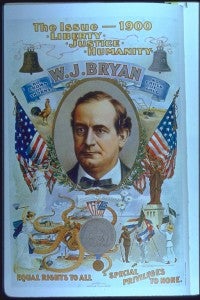
Stephen A. Douglas, ca.1853
Today we feature another Civil War post from Luci Petlack, graduate student in the History department at U.C. Davis…
BACKGROUND: In 1857 the Supreme Court ruled on the infamous Dred Scott Decision. Chief Justice Roger Taney’s majority opinion claimed that people of color could never be American citizens and that the Missouri Compromise of 1820 and the Compromise of 1850 were both unconstitutional as Congress had no right to interfere with the property of citizens, including slaves. As the ties loosely holding the country together weakened further, Americans began debating the meaning of this momentous decision. The most famous discussion occurred in a series of debates between incumbent Senator Stephen A. Douglas and small-town, lawyer Abraham Lincoln as they toured Illinois running for Senate in the 1858 Congressional election.
In these debates Douglas, a long-time advocate of popular sovereignty, argued that the Dred Scott decision still allowed for popular sovereignty. Douglas accused Lincoln of desiring racial equality and allowing marriage between the two races. Lincoln flubbed a response, but eventually proffered a complicated understanding of distinguishing the rights of the races. He believed that all people were created in the image of a supreme being and therefore had the same natural rights. He then explained civil rights, guaranteed by the federal government. Here, Lincoln claimed to believe that black men should have some civil rights, but not all (i.e. citizenship but not the right to vote). Lastly were states’ rights that should be determined by the individual states – pulling directly from constitution. His main example here was the right to marry. If the state of Virginia prohibits the marriage of African-Americans, then the federal government could not interfere. This delineation of rights is what brought Lincoln to the forefront of Republican politics on the eve of the Civil War.
Neither man claimed a victory in the debates. Douglas went on to win the Senate seat by a landslide, but this was not a loss for Lincoln as he had become a national figure and was available to run for president in 1860. These discussions created the leader who would take the country into and eventually win the Civil War.
How to use this image: When teaching the coming of the Civil War, the connections between the events occurring around the country and the political happenings often seem disconnected. The Lincoln-Douglas Debates provide a great way to connect the events of the 1850s with the rise and eventual victory of Abraham Lincoln. In 1858 a back country lawyer became a well-respected speaker and more firmly established his place as a Republican politician along with his stance against the expansion of slavery. From this discussion, we learn where Lincoln came from (i.e. how a black-horse candidate won the presidency) and why Southerners so immediately seceded upon his election.
Luci Petlack is a doctoral candidate in the History Department at the University of California, Davis. Her research interests include black American history, race relations and the American Civil War. Her dissertation, “A Dilemma of Civil Liberties: Blacks under Union Military Control, 1861-1866,” looks at the effects of military occupation and martial law on black communities during the Civil War in Baltimore, Maryland; New Orleans, Louisiana and Cincinnati, Ohio.



